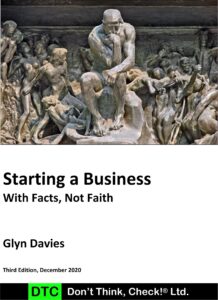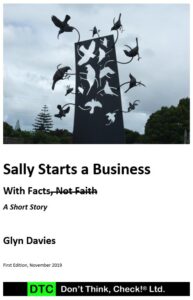What are we to make of organisational stories and myths? It seems as though yarns, gossip, stories, and myths have universal appeal, but should we take them at face value as a representation of a truth, reality, or facts of an event?
People such as Yiannis Gabriel study the stories we tell and the myths we perpetuate, and it turns out that stories serve deep physic purposes; stories have wish-fulfilment aspects to them that allow us to create and express emotions that might be otherwise hidden. Stories it seems almost have a life of their own, ‘careers’ as Gabriel put it, separate from the events that precipitated them; it’s almost as if they want to survive by their retelling, morphing, embellishment, censoring, and retelling anew.
Gabriel identifies three major types of stories:
- The comic story, surrounding deserved misfortunes, cock-ups and other quirky or unusual events; it is accompanied by mirth and laughter, and provides a moral amnesty by permitting the expression of ideas which would otherwise remain silent.
- The tragic story, spawned by undeserved suffering and trauma; it generates the Aristotelian mixture of fear and pity, and may lead to the attribution of guilt to legitimate objects of aggression or to supernatural principles.
- The epic story, centring on battles or contests won and the great deeds through which crises are resolved. It generates pride and inspires commitment. (Gabriel, 1991, p. 440)
Stories can entertain, they can inform, they can be used to relieve tedium, they can also be used to enhance group cohesion by stressing what is salient. To achieve such diverse objectives, it is important, compared to the objective facts of the topic, what stories contain and what they leave out; stories can be seen as “poetic reconstructions of events in which the accuracy of the narrative is sacrificed in the interest of fulfilling vital needs and desires, sometimes unconscious ones, shared by organisational participants.” (Gabriel, 1991, p. 428). Stories also may provide clues about emotions, topics, or views that are not easily surfaced or revealed by the usual survey techniques (Gabriel, 1991, p. 428), as their relative informality allows risqué expression.
Stories as symbolic artefacts, are carriers or expressions of meaning, and are not encumbered by such requirements as the accurate representations of facts. But whose meaning is represented? A difficulty we humans have as creators and perpetuators of stories (and other symbolic forms), is that within each human skull lies a unique interpretation of each word, sentence, and the story as a whole. This means that every story recipient will derive their own, perhaps similar, perhaps different meaning from a story. Stories then can be ambiguous and contorted. Stories also gradually become detached from the events that gave rise to them and then have a life of their own. The risk of correct story interpretation increases further when stories are removed for analysis from the meaning systems(organisations) that created them. Stories, as used in business case-studies are not by their nature inherently portable, and it is likely that the meaning and value derived by the natives will be different from the meaning derived by the students.
In their retelling, stories are never identical. The transcription errors, far from being solely attributable to feeble memories and poor story telling are significant. The errors, such as omissions, embellishments, and errors of fact, are important in their own right as they are likely clues as to what people want to believe happened, should have happened, and why.
Organisations will always have stories. Stories, and in particular jokes, express what cannot be expressed in sober or formal narrative (Gabriel, 1991, p. 431). Stories are plastic; they can be improved by omission, embellishment, or change of emphasis (Gabriel, 1991, p. 432) to suit a purpose. Stories are remarkably persistent and resistant to change, hence Gabriel’s observation (and article title) that it seems easier to kill a dragon than to kill a myth. Stories may also permit multiple meanings and become parts of different folklores (management and workers). Because people continually search for meaning, it is not a given that they will reach out for just any story. It may be tempting to manufacture events for the subsequent stories that those events produce, but this is a risky proposition as people do not latch on to just any meaning, and such attempts would likely backfire as insensitive and clumsy attempts at manipulation.
In summary, Gabriel suggests that organisational stories fulfil a number of psychic needs:
- Stories give an outlet to creative imaginative qualities, in environments which usually thwart them.
- Stories permit the discharge of emotion, in situations which normally seek to minimise emotion.
- Stories express ideas and wishes that are normally censored externally or repressed internally.
- Stories humanise impersonal surroundings, they personalise conflicts and oppression in contexts where they are usually invisible and impersonal. (Gabriel, 1991, p. 441)
The value and importance of stories to organisations then, is not as the accurate portrayal of events, but as clues to wish-fulfilments, as attempts to derive meaning and create messages, and as an insight into people’s real feelings about the organisation.
All of this raises some interesting questions: how are organisations fulfilling the psychic needs of their people? Can stories be a barometer of organisational health? And is it possible for organisations and their individuals to stimulate and perpetuate good news stories simply by behaving in kind, humane, caring, and authentic manners? People are going to create and perpetuate stories, that is a given. It is to a large degree within our influence whether those stories accentuate the positive or the negative, and whether they reinforce or whether they subvert organisational aspirations.
References
Gabriel, Y. (1991). On organisational stories and myths: why it is easier to slay a dragon than to kill a myth. International Sociology, 6(4), 427-442.



